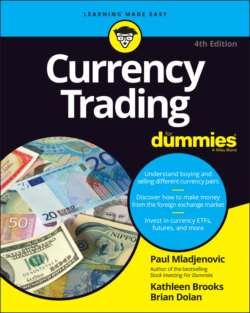Читать книгу Currency Trading For Dummies - Kathleen Brooks - Страница 52
Getting inside the interbank market
ОглавлениеSo what is the interbank market and where did it come from? The forex market originally evolved to facilitate trade and commerce between nations. The leading international commercial banks, which financed international trade through letters of credit and bankers’ acceptances, were the natural financial institutions to act as the currency exchange intermediary. They also had the foreign branch network on the ground in each country to facilitate the currency transfers needed to settle FX transactions.
The result over a number of years was the development of an informal interbank market for currency trading. As the prefix suggests, the interbank market is “between banks,” with each trade representing an agreement between the banks to exchange the agreed amounts of currency at the specified rate on a fixed date. The interbank market is alternately referred to as the cash market or the spot market to differentiate it from the currency futures market, which is the only other organized market for currency trading.
Currency futures markets operate alongside the interbank market, but they are definitely the tail being wagged by the dog of the spot market. As a market, currency futures are generally limited by exchange-based trading hours and lower liquidity than is available in the spot market. (See Chapter 14 for more about currency futures.)
The interbank market developed without any significant governmental oversight, and it remains largely unregulated to this day. In most cases, there is no regulatory authority for spot currency trading apart from local or national banking regulations. Interbank trading essentially evolved based on credit lines between international banks and trading conventions that developed over time.
The big commercial banks used to rule the roost when it came to currency trading, as investment banks remained focused more on stocks and bonds. But the financial industry has undergone a tremendous consolidation over the last 25 to 30 years, as bank merger after bank merger has seen famous names subsumed into massive financial conglomerates. Just 20 years ago, there were over 200 banks with FX trading desks in New York City alone. Today that number is well below a hundred. But overall trading volumes have steadily increased, a testament to the power of electronic trading.
Currency trading today is largely concentrated in the hands of about a dozen major global financial firms, such as UBS, Deutsche Bank, Citibank, JPMorgan Chase, Barclays, and Goldman Sachs, to name just a few. Hundreds of other international banks and financial institutions trade alongside the top banks, and all contribute liquidity and market interest.
